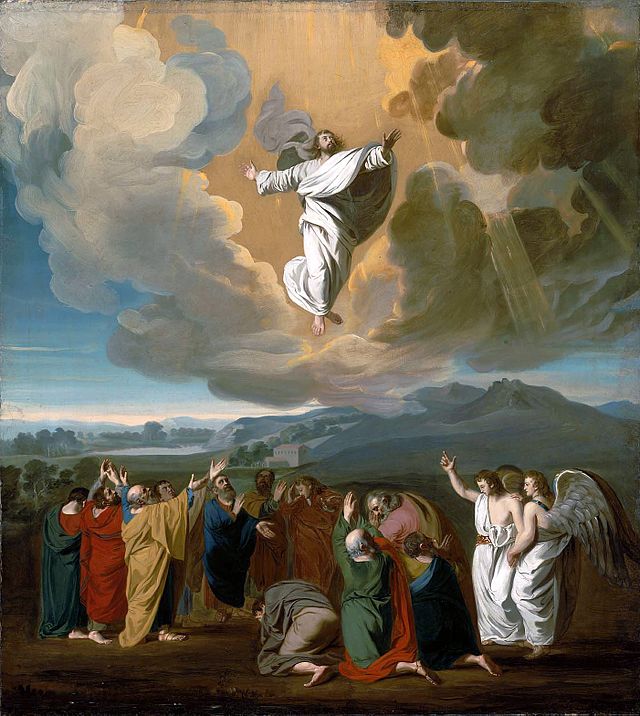In the Niceno-Constantinopolitan Creed, God the Father is said to have created Heaven and earth (οὐρανοῦ καὶ γῆς) while the Son of God is said to have come down from the Heavens (ἐκ τῶν οὐρανῶν) to become man and, after His resurrection from the dead, to have ascended into the Heavens (εἰς τοὺς οὐρανούς), where He sits at the right hand of the Father. One might be tempted to dismiss the use of both the singular number and the plural as a need for poetic variety, rather than an indication of two different places. On the other hand, it is worth asking whether God the Son came from the Heaven that His Father created, as if He were a creature like Heaven itself. Surely not, for the Nicene Creed was written to reject this Arian position. Therefore, when the Son is said to have come and to return to “the Heavens,” the plural may indicate the place where the Holy Trinity alone abides, as opposed to the place created by God for His blessed creatures (the Angels and Saints).
Friday, November 22, 2024
Numbering the Heavens
Michael P. Foley
Lost in Translation #112
These subtleties, in any event, are lost in translation. All the official vernacular versions of the 1970 Roman Missal that I consulted use “heaven” (singular) every time: the Italian has cielo, the French ciel, the German Himmel, and the English “heaven.”
But the greatest peculiarity of all is the Latin translation that is in both the old and new Roman Missal, which has that God is the Creator of Heaven (caelum), that His Son descends from the Heavens (caeli), and that the Son ascends into Heaven (caelum). The Latin, in other words, follows the Greek numbering of the noun the first two times but not the third.
The advantage of the original Greek is that it shows that the place whence Jesus came is the exact same place whither He returns. By ascending into Heaven, Jesus perfectly closes the circle of His journey. Such a circle, it seems to me, is typical of ancient Greek thought, from the departure and homecoming of Odysseus in Homer’s Odyssey to the emanation and return of the soul in Plotinus’ Enneads. The Roman mentality, by contrast, is more like the trajectory in Vergil’s Aeneid. By journeying to Italy, Aeneas is technically returning to his ancestral home,[1] but it is a home to which he has never been before. Thus, Aeneas’ journey is both circular and linear, with the movement of the plot dominated by the latter. Perhaps by proclaiming that Jesus came from the Heavens and ascended into Heaven, the Latin Creed is drawing attention to how Heaven is now different thanks to the Ascension and the holy souls, rescued from Limbo, who now fill it. Or, Heaven is now different because a human soul and body has entered it for the first time, a High Priest offering His own blood in a Temple not made of human hands. (See Heb. 9, 12)
And there may be a second reason for the Latin “mistranslation.” To my mind, rendering a place or region in the plural makes it more indeterminate or amorphous. Someone who is lost in the canyons, for example, seems more lost to me that someone who is lost in the canyon; in the latter case, we can deploy the search party with greater precision. Jesus coming from the “heavens” could mean that Jesus is coming from an amorphous place on High, but when Jesus returns, He is returning to a determinate place specified in the next verse: He sitteth at the right hand of the Father. The specificity of this location may have inspired the Latin translator to call the place of this throne “heaven” rather than “the heavens,” and that specificity ties in nicely with the specificity of the concrete body and soul of the Incarnate Word, who is not returning to the Father in the same condition as He left.
Note
[1] The Trojans are called Dardans, and Dardanus is said in Aeneid 3.163, 7.273, and 8.180 to have come from Hesperia, an ancient name for Italy.



